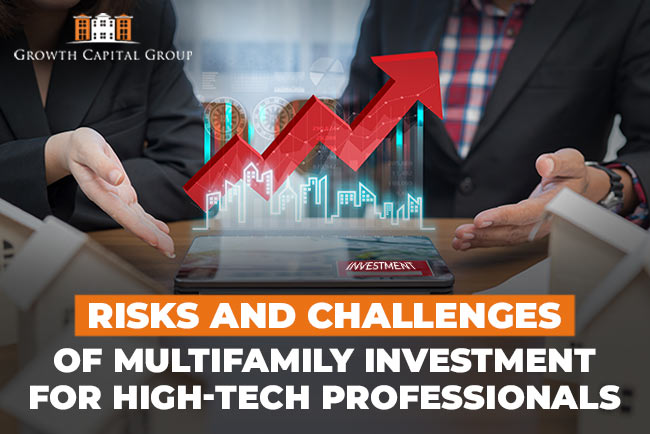As a high-tech professional, you may be interested in investing in multifamily properties to diversify your portfolio and generate passive income. However, as with any investment, there are potential risks and challenges that you should be aware of before jumping in. In this blog post, we’ll discuss some of the most significant risks and challenges of multifamily investment for high-tech professionals and strategies for mitigating these risks.
Risks And Challenges Of Multifamily Investing For High-Tech Professionals
1. Market Volatility
One of the most significant risks of multifamily investment is market volatility. Real estate markets can be unpredictable, and factors like changes in interest rates, economic downturns, and new development projects can all impact the demand for rental properties. High-tech professionals who are used to dealing with the fast-paced and dynamic nature of the tech industry may feel comfortable taking on this level of risk. However, it’s important to remember that real estate investment is a long-term game, and it’s crucial to have a strategy to weather market ups and downs.
2. Tenant Turnover
Another challenge of multifamily investment is tenant turnover. When you own a multifamily property, you rely on your tenants to pay rent consistently and on time. If your tenants move out frequently, you’ll have to spend time and money finding new tenants, which can drain your resources. Additionally, frequent turnover can impact the property’s reputation and make it harder to attract new tenants in the future.
3. Property Management Issues
Managing a multifamily property can be time-consuming and complex, especially for high-tech professionals who may need to gain experience in the real estate industry. Property management tasks can include collecting rent, handling maintenance requests, dealing with difficult tenants, and legal issues. If you must prepare to take on these tasks, you’ll need to hire a property manager, which can affect your profits.
4. Economic Downturns:
Multifamily investment is susceptible to economic downturns, leading to reduced demand for rental properties and increased vacancy rates. This can negatively impact the investor’s cash flow and property values.
5. Regulatory Environment: The regulatory environment for multifamily investment can be complex, with different rules and regulations at the local, state, and federal levels. Investors must know these regulations and comply to avoid legal issues and fines.
6. Financing:
Multifamily investment typically requires significant capital, and securing funding can be challenging, especially for new investors. Interest rates and terms vary widely; investors must find the best financing options.
7. Competition:
Multifamily investment is a popular option for investors, and competition for properties can be fierce. This can drive up prices and make it difficult for investors to find properties that meet their investment criteria.
Mitigating Risks Of Multifamily Investing For High-Tech Professionals
Despite these risks and challenges, investing in multifamily real estate can be an intelligent choice for high-tech professionals looking to diversify their portfolios.
Here are a few strategies for mitigating the risks associated with multifamily investment:
1. Partner with experienced operators.
One way to mitigate the risks of multifamily investment is to partner with experienced operators with a track record of success in the industry. By working with a professional partner, you can benefit from their expertise and leverage their network to find high-quality properties.
2. Diversify across multiple properties.
Another way to mitigate risk is to diversify your investments across various properties. This strategy can help you spread out your risk and ensure that you’re independent of the success of a single property.
3. Invest in stable markets.
Investing in stable markets can help you avoid some volatility associated with real estate investment. By focusing on needs with solid job growth, low vacancy rates, and a diverse economy, you can increase the likelihood that your property will be in high demand and generate consistent returns.
4. Stay up-to-date with regulations and industry trends:
Real estate regulations and industry trends constantly evolve, and high-tech professionals should stay updated. This includes monitoring changes in zoning laws, rent control regulations, and tenant rights, among other things. Staying informed can help mitigate the risks of legal and regulatory issues.
In conclusion,
Multifamily investment can be a lucrative opportunity for high-tech professionals, but it’s crucial to approach it with a clear understanding of the risks and challenges involved. By partnering with experienced operators, diversifying across multiple properties, and investing in stable markets, you can mitigate some risks and set yourself up for long-term success.
If you’re interested to know more about the Risks and Challenges of Multifamily Investment for High-Tech Professionals, Then please contact us at Growth Capital Group.



